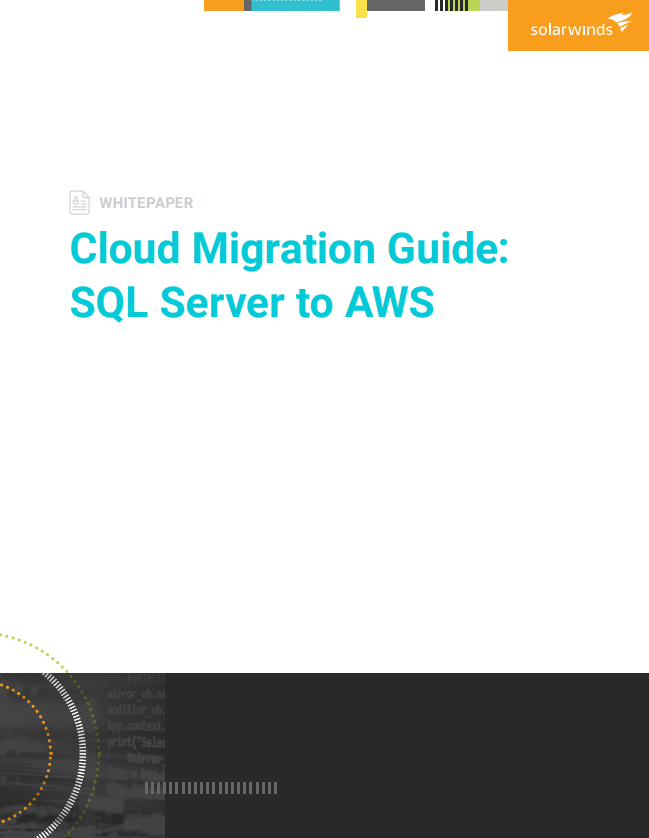Cloud Migration Guide SQL Server to AWS
Publish Date: 5/25/2021
Whitepaper
This guide will provide a detailed look at the migration process and options and show you how SolarWinds® SQL Sentry and SolarWinds Database Mapper can assist with the upgrade and migration of SQL Server platforms to the Amazon Cloud
More resources similar to this
Cloud Migration Guide SQL Server to Azure
This guide will provide a detailed look at the migration process and options and show you how SolarWinds® SQL Sentry and SolarWinds Database Mapper can assist with the upgrade and migration of SQL Server platforms to the Microsoft Azure Cloud.
View Whitepaper